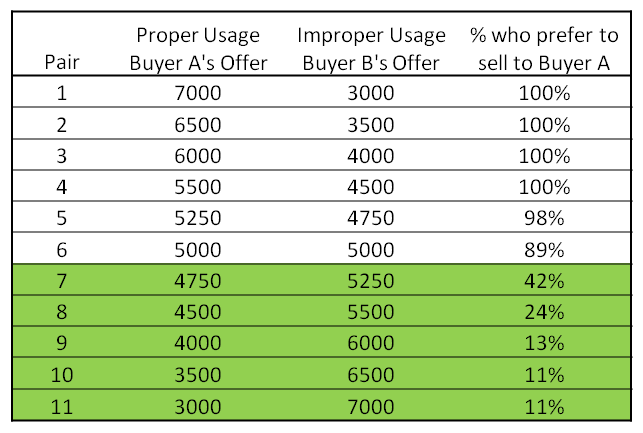… a powerful technique for winning, even with low bids

 Want to buy a scarce item, like that one of a kind dream home, vintage car, or a classic grand piano? Well then there’s good news. You can successfully win against higher bidders for the item by including non-price attributes in your conversations with the seller!
Want to buy a scarce item, like that one of a kind dream home, vintage car, or a classic grand piano? Well then there’s good news. You can successfully win against higher bidders for the item by including non-price attributes in your conversations with the seller!
We have to remind ourselves that it’s not all about price! Non-price attributes like location, delivery, brand, and service can all differentiate the core product sufficiently to allow sellers to charge higher prices. The good news is that non-price attributes can also work for buyers of scarce items.
… sellers really do pay attention to factors beyond price paid when considering WHO to sell a scarce item to.
In a series of studies done by Aaron R. Brough and Mathew S. Isaac of the Kellogg School of Management at Northwestern University, the research team was able to prove that sellers really do pay attention to factors beyond price paid when considering WHO to sell a scarce item to.
One of the key reasons for this is a concept called the endowment effect. Earlier behavioral economics studies proved that people who possess an item, even for a short period of time, value that item more so than a similar item owned by someone else. This endowment effect transforms our decision making from a purely rational process, to one also involving emotion and sentiment. Sellers may be especially concerned with how a buyer intends to use the item after its purchase. This post purchase usage intent may often be the deciding factor as to WHO a seller will sell to.
In the first study, 89 participants were asked to consider 11 pairs of offers for a grand piano. In each case, they had to choose one of the offers based on a combination of offered price and buyer usage intent. Proper usage intent was defined as the buyer intended to play the piano. Improper usage was defined as the buyer intended to solely use the piano to decorate the home.
Here’s a copy of a table from the study (highlighting is mine):

As you can see, a significant number of participants continued to want to sell the piano to the “proper usage” buyer, even when they were offering a lower price! On average, participants were willing to forego $680 to ensure that the piano would go to someone who would actually play it.
In another scenario, the item being sold was a rare hand made doll that was in perfect condition, and just recently returned from an art museum where it was on display. The three types of buyer intents offered for the doll included:
- purchased for display in an art gallery (proper usage)
- purchased for the buyer’s daughters to play with (improper usage)
- purchase intent unknown
Once again, the sellers were most likely to offer the doll at a discount to the proper usage category. Other scenarios involving a diamond engagement ring, and real life used car sellers on an auto sale website also confirmed the researchers’ hypothesis.
What’s the marketing lesson?
Price is just one of the factors a buyer or seller considers. Non-price attributes have a powerful ability to sway the decision in and out of your favor. If you can create an emotional connection and alignment of interests with your negotiation partner, this may be all the edge that you need.
![]()
